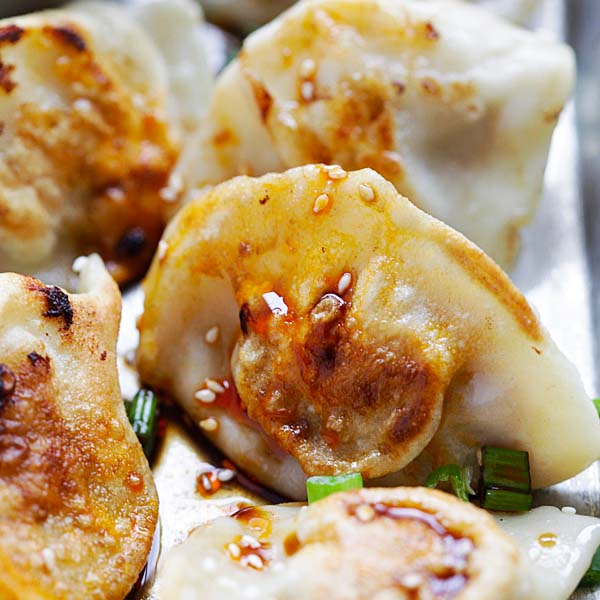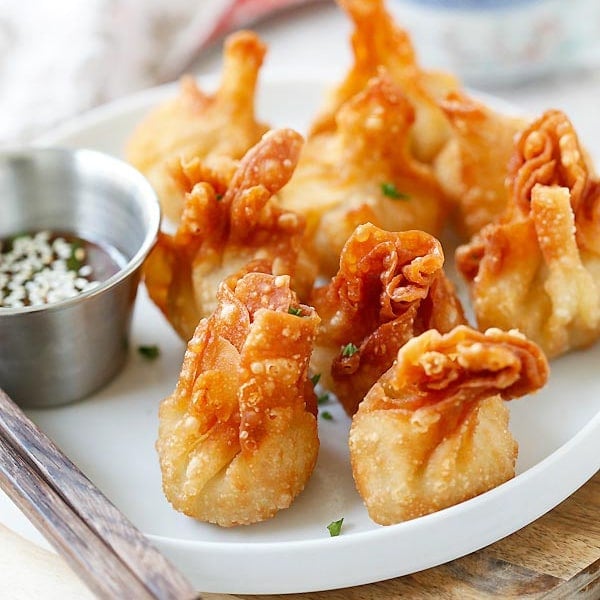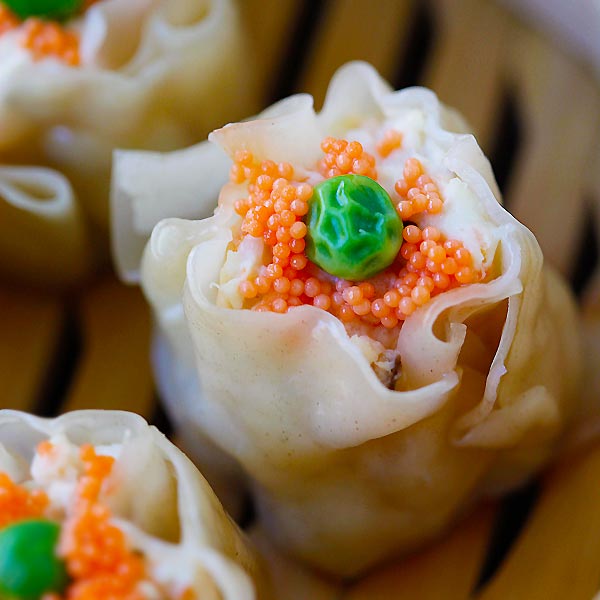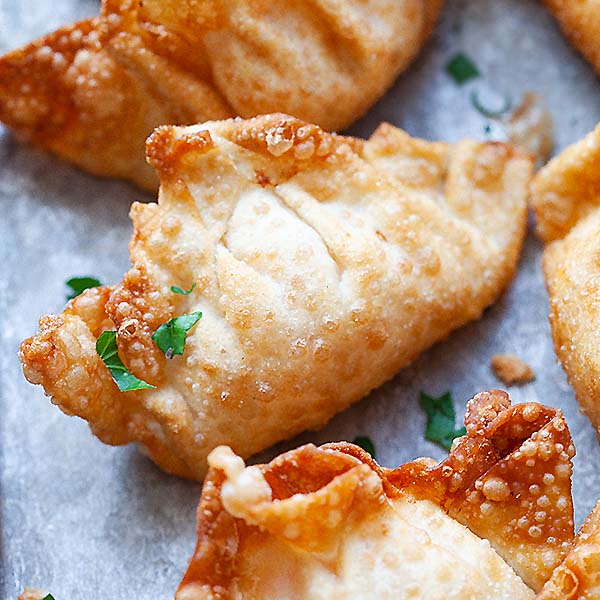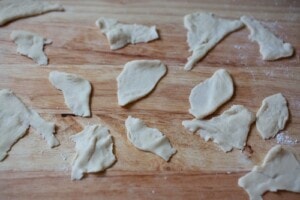This post may contain affiliate links. Please read my privacy policy.
Pan Mee is a popular Malaysian-Chinese recipe with hand-torn noodles in a rich and flavorful anchovy broth. The toppings include ground pork, leafy green vegetables, mushrooms and crispy anchovies. The dish can be served dry or with soup, with dry chili crisp as a condiment for extra kick and flavors.
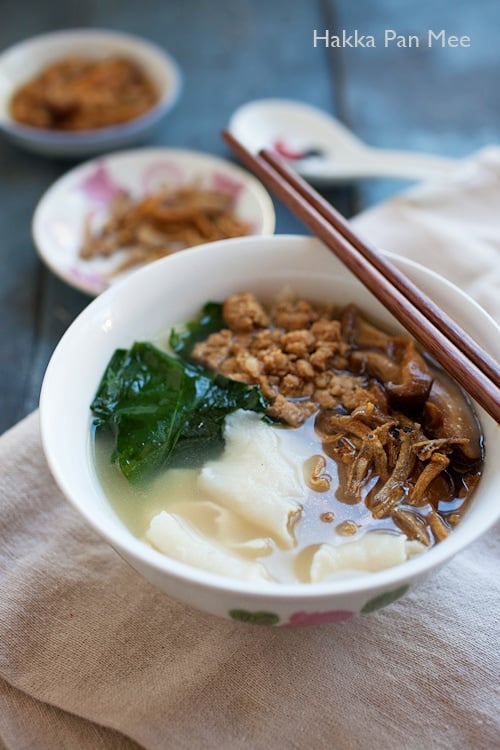
What Is Pan Mee
Pan Mee (板面) is one of the most popular Malaysian recipes. It’s a Hakka noodle dish, especially in central and southern part of Malaysia where most Hakka people or ke jia ren (客家人) reside.
Hakka Pan Mee is made with a simple flour-based dough, with anchovy broth, and topped with crispy fried anchovies, ground pork, shiitake mushrooms, and some vegetables.
Pan Mee is also known as Mee Hoon Kuih (面粉糕), which is commonly prepared at home.
I will be honest, before I develop this Pan Mee recipe, I have had Pan Mee only once.
Yes, once, some twenty years ago while I was visiting Kuala Lumpur. While I was growing up in Penang, Pan Mee was never sold in the hawker centers or street food stalls, so it has never been in my culinary dictionary.
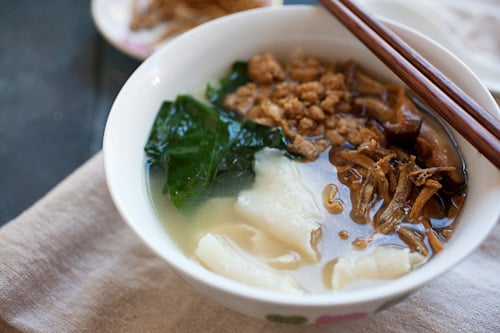
Anyway, what prompted me to develop a recipe for Pan Mee?
Well, it all started with a HUGE bunch of mani cai (马尼菜), or cekur manis/sayur manis in Malay.
Mani cai, my favorite vegetable and a key ingredient of Pan Mee, is not available in the United States.
The vegetable is not grown here and thus it’s one of those things that I could never get in the US.
My friend Eddie grows his own plant, and gave me a big batch of his harvest.
I promised him I would make Pan Mee.
I reached out to my friend Anna and she taught me how to make pan mee.
It was a success and Anna, who used to live in Pan Mee paradise of KL, gave me her thumbs up.
I invited a couple friends over to my house to taste my Pan Mee and they all gave me their rave reviews.
I, for one, who have never been a fan of Pan Mee, is now a converted fan.
I finally understand why so many people love Pan Mee.
It is a Hakka comfort food in a bowl—nothing flashy or glamorous about this dish, but it is tasty and very satisfying.
If you are of Hakka descent and far away from Malaysia, I hope my Pan Mee recipe could bring the tastes of home to wherever you are.
Happy cooking!
Frequently Asked Questions
This recipe is 625 calories per serving.
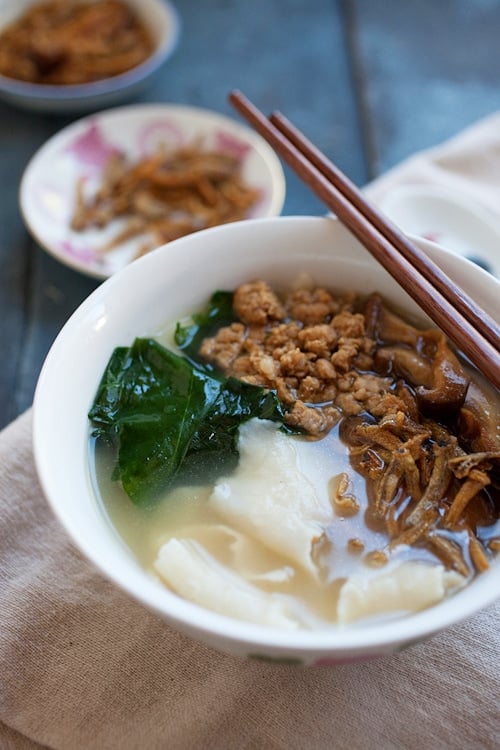
What To Serve With Hakka Flat Noodle Soup
For a wholesome meal and easy weeknight dinner, I recommend the following recipes.
I hope you enjoy this post as much as I do. If you try my recipe, please leave a comment and consider giving it a 5-star rating. For more easy and delicious recipes, explore my Recipe Index, and stay updated by subscribing to my newsletter and following me on Facebook, Pinterest, and Instagram for new updates.
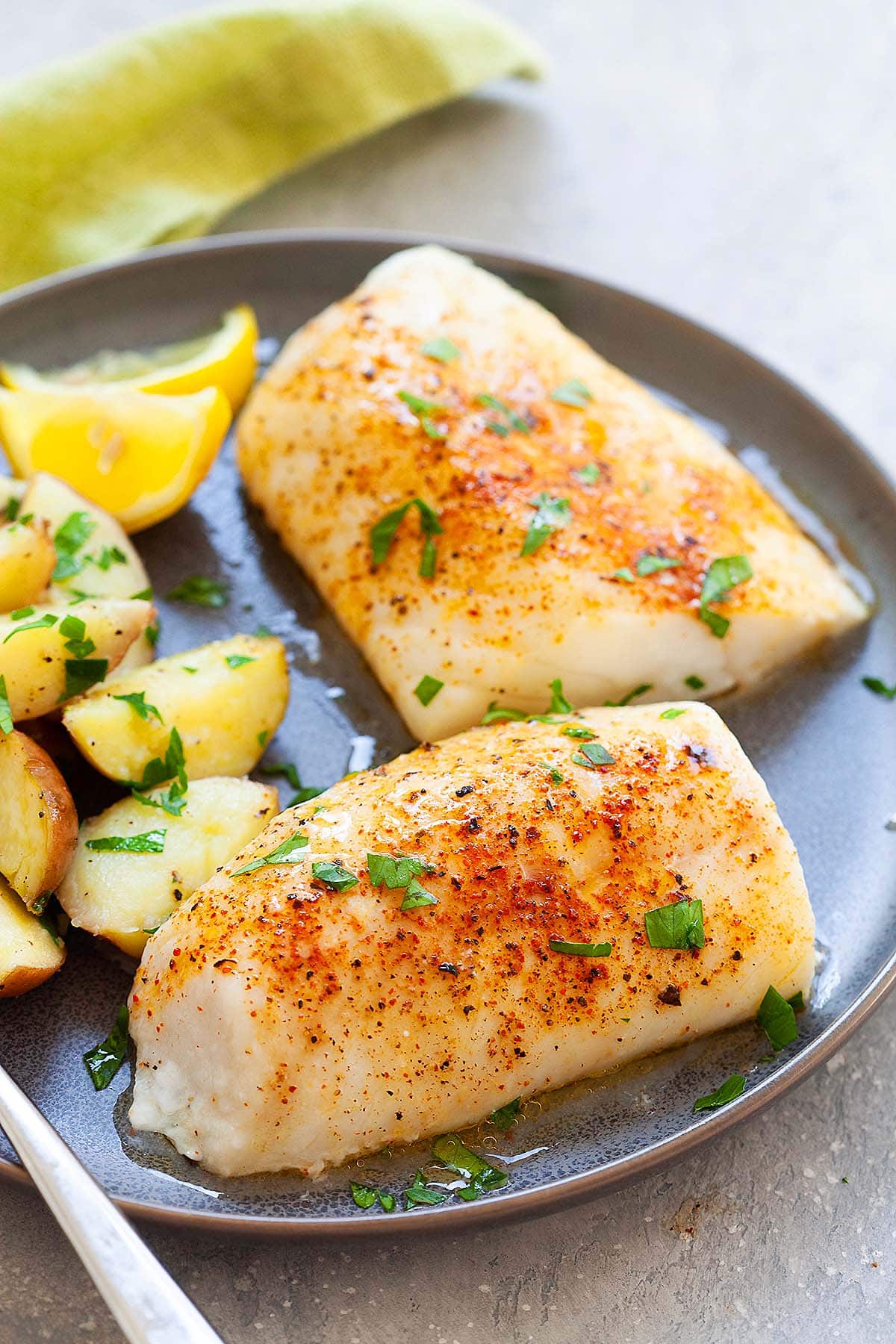
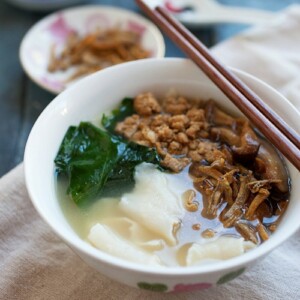
Pan Mee (Hakka Flat Noodle Soup)
Ingredients
- 1 cup dried anchovies, heads removed
- oil for frying
- 1 bunch mani cai
Soup:
- 1 cup dried anchovies, heads removed
- 1 lb (500g) pork bones
- 10 cups water
- 3 stalks scallions, white part only
- salt to taste
Dough:
- 2 cups all-purpose flour
- 1 large egg
- 1/4 cup water , + 2 tablespoons water
- extra flour for dusting
Ground Pork and Mushroom Topping:
- 1 tablespoon oil
- 1 clove garlic, finely minced
- 4 oz (125g) ground pork
- 4 dried shiitake mushrooms, , soaked in warm water and stems removed, cut into strips
- 1 tablespoon black soy sauce
- 1 tablespoon soy sauce
- 1 teaspoon oyster sauce
- 1 1/2 teaspoons sugar
- 1/2 teaspoon sesame oil
- 3 dashes white pepper
- 1/2 cup water
- 1 teaspoon cornstarch, + 1 tablespoon water
Instructions
- Wash the two cups of anchovies thoroughly with water, rinsing about 5 times or until the water runs clear. Drain and set aside. Wash the pork bones thoroughly and scald them with boiling water. Leave the pork bones in the water for a few minutes, then discard the cloudy water. Rinse again with cold running water to remove any impurities from the pork bones. This step ensures that the soup will be clearer once cooked.
- Bring 10 cups of water to a boil, then add 1 cup of anchovies, the pork bones, and scallions. Reduce the heat to medium-low and simmer for over 1 hour, or until the soup is flavorful. Add more water if the soup evaporates, and season with salt to taste.
- Prepare the dough by combining all the ingredients in a large mixing bowl. Stir and mix with a spoon, then knead with your hands until the dough is no longer sticky. You can add a little water or flour to achieve the desired consistency. Cover with a damp cloth and let it rest for an hour.
- Meanwhile, prepare the Ground Pork and Mushroom Topping. Heat a wok and add oil. When hot, stir-fry the garlic until fragrant. Add the ground pork, breaking up lumps with a spatula. Stir in the mushrooms and combine. Season and add water, then reduce heat to low and braise for about 5 minutes. Add the cornstarch and water mixture to thicken the sauce. Dish out and set aside.
- Prepare the remaining anchovies by frying them in some oil. Make sure they are fried until golden brown and crispy. Set the fried anchovies aside.
- Bring a pot of water to a boil while you prepare the dough. You can prepare the dough by hand or with a pasta machine. If you don’t have a pasta machine, divide the dough into a few portions and flatten each portion with a rolling pin on a flat surface dusted with flour.
- At this point, you can cut the dough into thicker strands for broad noodles or tear it into irregular pieces, which is fine. (If hand torn, it’s called mee hoon kuih.) If using a pasta machine, roll out the dough and cut it into fettuccine shapes. Cook the noodles in boiling water until they float or are fully cooked, then drain with a colander.
To assemble a bowl of Pan Mee
- Bring some soup to a boil in another saucepan and add some mani cai. Add a dash or two of white pepper. In a serving bowl, place a portion of the noodles, then pour the soup and mani cai over them. Top with the ground pork and mushroom topping and the fried anchovies. Serve immediately with sliced red chilies and soy sauce.
Notes
Nutrition
Nutrition information is automatically calculated, so should only be used as an approximation.
